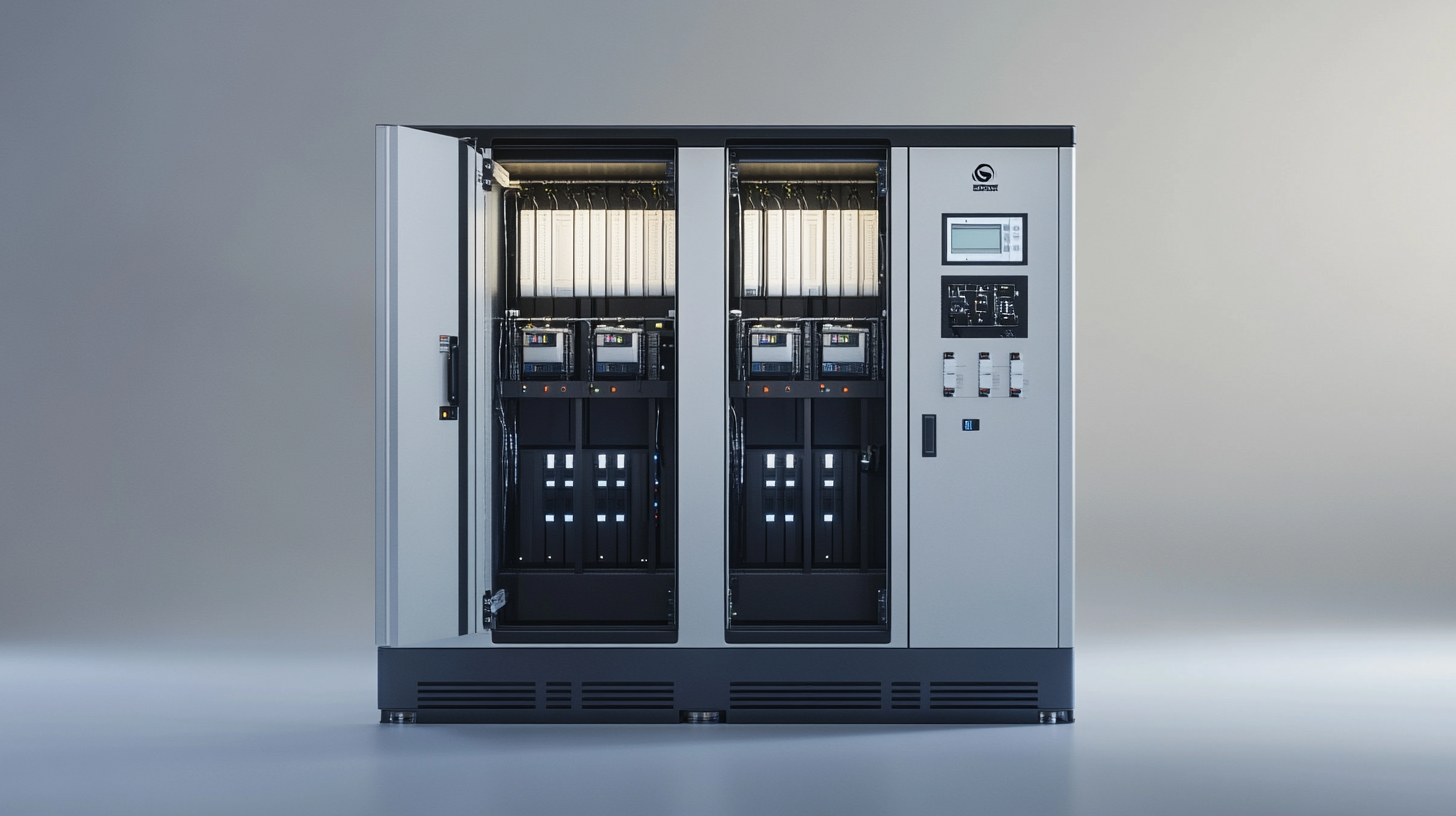Blog
Evolving Trends in Back Up Power Supply Solutions for Global Markets
In today's rapidly changing technological landscape, the demand for reliable Back Up Power Supply solutions has reached unprecedented levels. According to a recent report by MarketsandMarkets, the global uninterruptible power supply (UPS) market is projected to grow from $9.6 billion in 2020 to $14.5 billion by 2025, reflecting a compound annual growth rate (CAGR) of 8.5%. This growth is driven by an increasing reliance on electronic devices and the need for seamless power continuity across various sectors, including healthcare, IT, and telecommunications. As businesses and consumers alike recognize the critical importance of power reliability, innovative solutions in backup power generation are becoming essential to ensure operational resilience.
Moreover, the evolving landscape of renewable energy sources is transforming the Back Up Power Supply market. The integration of solar power systems, battery storage technologies, and smart grid solutions is not only enhancing efficiency but also promoting sustainability. According to the International Energy Agency, global investment in renewable energy is expected to exceed $10 trillion over the next two decades, further underscoring the necessity for advanced backup systems that can seamlessly transition between energy sources. This blog will explore the latest trends and technologies shaping the future of Back Up Power Supply solutions, illustrating how they are meeting the diverse needs of global markets.

Emerging Technologies in Backup Power Supply Systems
The realm of backup power supply systems is witnessing remarkable technological advancements, driven by a need for sustainability and energy resilience. One of the most promising developments is the integration of smart grid-ready Uninterruptible Power Supply (UPS) systems. These innovative solutions not only enhance energy management within data centers but also support a more sustainable approach to energy consumption. By allowing for greater system flexibility, these UPS systems can adapt to energy demands while contributing to an overall reduction in carbon emissions. Emerging technologies such as microgrids are also reshaping the landscape of backup power solutions. Microgrids, bolstered by robust backup systems, offer industries a reliable means to enhance energy resilience. This is particularly significant in sectors where uninterruptible power is critical, such as healthcare facilities. Recent regulations in the U.S. now permit hospitals to utilize clean energy sources for their backup power, marking a significant shift towards greener alternatives. This move reflects a broader trend where environmental considerations are steering both technology development and selection. Additionally, energy storage systems, often likened to "giant batteries," are becoming increasingly vital in managing excess energy and ensuring operational efficacy during outages. As industries look for scalable and efficient backup power solutions, the rise of modular UPS systems is paving the way for flexibility and expansion tailored to specific needs. The emergence of hydrogen storage technologies also presents exciting prospects for large-scale backup power applications, further underlining the dynamic evolution of backup power supply systems as they respond to global energy challenges.

Shift from Traditional Generators to Renewable Energy Solutions
The energy landscape is rapidly evolving, particularly with the shift from traditional generators to renewable energy solutions. This transition is exemplified by the global solar generator market, which was valued at $591.09 million in 2024 and is projected to grow significantly, reaching approximately $1.02 billion by 2028. This surge in the solar generator market highlights a broader trend towards sustainable energy alternatives that prioritize low carbon emissions and reduce reliance on fossil fuels.
As the world grapples with the pressing challenge of greenhouse gas emissions and climate change, the importance of renewable energy sources cannot be overstated. While renewable energy sources like solar and wind are gaining traction, some reports argue that nuclear energy remains a vital player in this transition, capable of replacing fossil fuels at a scale that renewables currently cannot achieve alone. The combination of solar, wind, and nuclear solutions could create a more balanced, resilient energy grid that significantly lowers carbon footprints.
In this context, data centers and utilities are reimagining their energy strategies to accommodate the rising power demands driven by technological advancements. By exploring innovative models such as microgrids and behind-the-meter solutions, these entities are taking significant steps towards enhancing energy efficiency and sustainability, further emphasizing the urgency and practicality of integrating renewable energy into mainstream power supply systems.

Key Market Drivers Influencing Backup Power Supply Demand
The demand for backup power supply solutions is witnessing unprecedented growth, driven by several key market drivers that reflect the evolving needs of various industries. One of the primary factors is the increasing reliance on continuous power supply across sectors such as healthcare, telecommunications, and data centers. With the rise of digitalization and smart technologies, any interruption in power can lead to significant losses, making backup power an essential component for operational resilience.
In addition to industrial demands, the growing incidence of natural disasters and extreme weather events compels both businesses and households to adopt backup power solutions. As climate change intensifies, areas previously considered stable face risks of power outages. Consequently, consumers are prioritizing the installation of robust backup systems, including generators and uninterruptible power supplies (UPS), to safeguard their operations and ensure reliability during crises.
Moreover, the push for renewable energy solutions is reshaping the backup power landscape. As solar and wind energy become more widely utilized, the need for storage solutions to manage intermittent power supply grows. This shift not only enables better integration of renewable sources but also encourages innovative backup power technologies that can enhance energy efficiency and reduce reliance on fossil fuels. As these trends continue to evolve, they signal a transformative period for backup power supply solutions in global markets.

Innovations in Energy Storage Technologies and Their Impact
Innovations in energy storage technologies are transforming the landscape of backup power supply solutions across global markets. With the increasing demand for reliable energy sources, the spotlight is now on cutting-edge storage systems that can seamlessly integrate with renewable energy sources. Advanced technologies such as lithium-ion batteries, solid-state batteries, and flow batteries are setting new benchmarks for efficiency, safety, and longevity. These innovations not only improve the performance of backup power systems but also make them more accessible for a wider range of applications, from residential setups to large-scale industrial deployments.
Moreover, the emergence of smart energy management systems is taking energy storage to new heights. By utilizing sophisticated algorithms and real-time data analytics, these systems enhance the efficiency of energy consumption, ensuring that backup power is available exactly when it is needed most. This intelligent approach to energy storage not only minimizes waste but also optimizes the use of renewable energy, further driving down costs and environmental impact. As global markets continue to evolve, businesses and consumers alike are recognizing the importance of investing in advanced energy storage solutions that align with sustainability goals and economic resilience.
As countries around the world prioritize energy independence and security, the innovations in energy storage technologies will play a critical role in shaping the future of backup power supplies. These advancements are not just about providing emergency energy; they represent a shift towards a more sustainable and efficient energy ecosystem. By harnessing these technologies, we’re not only addressing the immediate challenges of energy continuity but also paving the way for a cleaner, smarter energy future.
Regional Variations in Backup Power Supply Needs and Solutions
In the context of backup power supply solutions, regional variations in needs and solutions are becoming increasingly pronounced. Different areas are facing unique challenges, influenced by factors such as climate, infrastructure, and economic conditions. For example, North America is experiencing a surge in demand for backup power systems driven by technological innovation in data centers. As organizations strive for resilience amidst power constraints, the data center power market is projected to grow significantly, indicating a shift towards more sophisticated and reliable backup power solutions.
Meanwhile, in regions like South-East Asia, the need for enhanced energy interconnectivity is pressing, particularly in light of extreme weather events that trigger long-lasting power outages. These countries must invest in new infrastructure that not only addresses energy distribution but also enhances overall energy resiliency. The response to climate change and its impact on energy supply systems necessitates a focus on innovative demand-side solutions that can protect against disruptions and ensure reliable power availability.
As the global market for lithium-ion batteries continues to expand, the energy sector is looking for sustainable, resilient, and circular value chain solutions. This shift emphasizes the importance of backup power supplies not just as a temporary solution, but as a critical component of sustainable development strategies worldwide. By adapting to regional variations, stakeholders can tailor solutions that meet specific local demands while contributing to a more interconnected and reliable global energy system.

